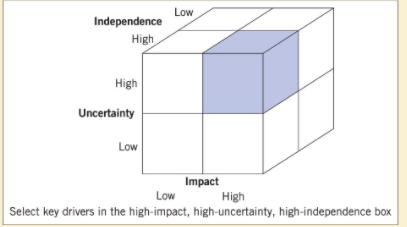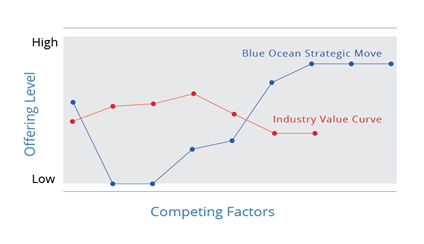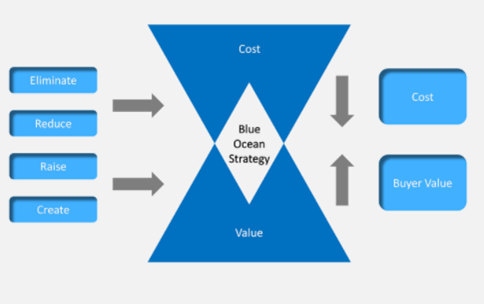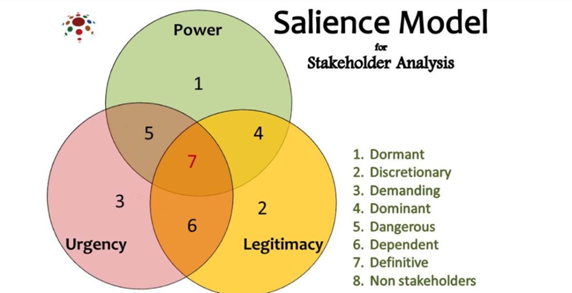Business Strategy Assignment: Opportunities & Threats Encounter By Mahindra & Mahindra Ltd
Question
Task:
Mahindra & Mahindra Case Study
|
Basic Information |
About the Company |
|
|
Incorporation Year |
1945 |
Mahindra & Mahindra Limited is an Indian multinational vehicle manufacturing corporation, with its main of?ce in Mumbai, Maharashtra. Established in 1945 as Muhammad & Mahindra, it was later renamed Mahindra & Mahindra. It is one of the largest vehicle manufacturers (by production) in India and the largest manufacturer of tractors globally. It is a division of the Mahindra Group, an Indian conglomerate. It was ranked 17th on a list of top companies in India by Fortune India 500 in 2018. Its major competitors in the Indian market include Maruti Suzuki and Tata Motors. It has 742 car showrooms across 480 cities in India. |
|
Headquarter |
Mumbai |
|
|
Type |
Holding |
|
|
CEO |
Pawan Goenka |
|
|
Employee Count |
42,875 (2019) |
|
|
Revenue |
15 Billion USD ('19) |
|
Purpose and Values
- Purpose: We’ve made humanity’s innate desire to Rise our driving purpose. We challenge conventional thinking and innovatively use our resources to drive positive change in the lives of our stakeholders and communities across the world to enable them to Rise. This purpose is why we exist, come to work every day and strive continuously in delivering our promise.
-
Values:
- Professionalism,
- Good Corporate Citizenship,
- Customer First,
- Quality Focus and
- Dignity of the Individual
Mahindra: Clean Energy
Mahindra recognises a great potential for generating clean energies by utilising India's plentiful solar strength. Mahindra Susten, their solar energy division has become a market leader in the solar EPC industry, with deep knowledge in utility-scale and decentralised solar PV EPC (engineering, procurement, and construction), building solutions, operations and maintenance, and other innovative services.
Mahindra Susten
Vision
- To be the world’s most admired brand in renewable energy
Mission
- To become a USD1 billion revenue company by 2022
- To become the preferred employer in India for superior talent
- To deliver maximum value to all our stakeholders working harmoniously with local and global communities
Mahindra Susten aims to Transform the Future via creative methods of thought and dedication in the field of clean energy, while also pledging to produce amazing experiences via conscious truthfulness. Mahindra Susten has evolved itself as one of the world's largest solar PV EPC firms, with a presence on every major continent.
Mahindra Solarize
Vision
- To accelerate the adoption of Distributed Renewable Energy by offering innovative and technologically superior products and solutions via the solar PV plants we build.
Mission
To be the most preferred brand for solar solutions by:
- Catering to the renewable energy requirements of the community of green crusaders
- Adopting and implementing business practices that minimise environmental risks
- Ensuring sustained profitable growth thereby creating value for internal and external stakeholders
- Adopt the product approach in asset light and risk mitigated manner
- Embrace digital transformation for higher productivity, flexibility and reach
Mahindra Solarize strives to delight customers by providing technologically advanced and creative clean energy alternatives underpinned by proficient, responsive, integrated, and trustworthy after-sales infrastructure. The products offered by Mahindra Solarize include:
- Solar rooftops,
- Solar water pumps, and
- Solar carports (Car sheds).
Business Strategy Assignment Overview
For this assessment, you will need to prepare a written report of ~ 2,500 words to identify and prioritise the opportunities and threats facing an assigned organisation.
The targeted sector for this assessment is the clean energy sector.
You will be required to review the external factors impacting the organisation it currently operates and the targeted sector. It is important to note that the focus is the Indian market only – not globally; and you will be focused on trends, opportunities, and threats for the next 3-5 years.
Answer
Executive Summary
The specific business strategy assignment emphasises on evaluation of the opportunities and threats that can be experienced by Mahindra in the upcoming 3-5 years while diving into the clean energy sector. The application of Pestle analysis, Porters Five Forces, Blue ocean strategy assessment, corporate governance assessment and Competitor Analysis is taken into consideration for identification of threats and opportunities for the selected organisation. It was determined that due to the uncertain nature of the Solar ECP industry in India, the company should be investing in a scaling process so that benefits can be churned in the long run. Furthermore focus should be given on implementation of the integration process and provision of solar services in both urban and rural communities.
Introduction
This assignment focuses on the environmental analysis and governance factors that assist in the diagnosis of the complex organizational issues. Mahindra is the clean energy company that has been operating in the Indian market. Assessment of the external and internal market factors is effective to identify strategic position of the company. Different types of theories and models such as PESTEL analysis, Five Force analysis, Blue Ocean strategy and scenario cubes have would be use to examine market condition of Mahindra.
1.1: Industry and sector performance analysis
The Solar EPC market of India has experienced a heat of competition owing to the increasing number of players. In relevance to aggressive competitive bidding and declination of equipment price, the solar sector within the Indian context has resulted in rapid declination of the solar power tariff in the modern day context. The company has observed enhanced capacity additions in each year within the solar space, as the company strives on attainment of 100 GW of the solar capacity targets within the year 2022 (Power Insight, 2018). Irrespective of the lowering of the price modules for improvement of the market dynamics in the face of increasing rates of foreign exchange, the players of EPC could not actively participate in maximising the earnings. The cost of EPC for the utility scale projects have experienced a marginal fall of 38W due to reduction within the module prices in the Indian context.
The renewable energy sector of India holds the 4th position across the globe. Installation of the capacity of the renewable power generation has gained momentum over the years, posing a CAGR of 17.33% between the financial year 2016 and 2020. India aims for attainment of the energy demands on its own, which is estimated to reach approximately 15820 TWH by the year 2040 (India and India, 2021). As of the month of July in the year 2021, India has a renewable energy capacity of 96.96 CW, which is representing 25.2% of the overall installation of power capacity, thus providing a huge scope for expanding of green data centres in the Indian context (India and India, 2021).
1.2: Macro Environment Analysis
The Pestle Analysis reflects upon the macro environmental factors which influence the business activities of the organisation (Zalengera et al. 2014). The PESTLE analysis of Mahindra is as follows:
|
Political |
In the Indian context, the government is keen on strengthening of the clean energy sector. The government is more interested to promote the renewable sources of energy for reduction of unnecessary energy consumption. |
|
|
It is a known fact that the India is hard hit by the pandemic situation. From the month of April to June 2020, the GDP of India experienced a massive drop of 24.4% (Dhingra and Ghatak, 2021). These aspects affected every business sector including the automobile industry of India. |
|
|
One of the challenges which can be experienced by the Mahindra company is that it is predominantly perceived as an automobile company. The products offered by the company through solarising has created buzz amongst the Indian population to some extent, however some section of the population are still interested in the conventional methods relating to normal consumption of energy.. |
|
|
There is a constant progress experienced related to solar panel technological development in the Indian market. In this regard, aspects of solar kin designs, solar powered roads and solar batteries have already created havoc resulting in reducing the unnecessary consumption of energy (Agarwal, 2021). Therefore, the company’s initiative of developing power cities through solarisation can turn out to be a successful business venture. |
|
|
The company needs to abide by the Electricity Act 2003, which takes the initiative of governing the legislation of solar energy in the Indian context. The company should abide by all the provisions and preferential tariffs mentioned by the act for opting of renewable sources of energy. |
|
|
One of the key aspects associated with the utilisation of the solar power energy is subjected to usage of land, loss of habitat, use of water and other hazardous materials involved in manufacturing (Union of Concerned Scientists, 2013). |
1.3: Competitor Analysis
|
Minda Nexgentech |
The most severe competitor of Mahindra within the Solar EPC industry of India is Minda Nexgentech. |
|
Reflex energy |
Reflex energy is regarded as one of the topmost rivals of Mahindra, which has its headquarter in Tamil Nadu. |
|
Harsha Abakus |
The company was established in the year 1972 and head quartered in Gujarat. |
|
Tata Solar Power |
Tata Solar power is one of the manufacturers and distributors of solar energy products (Tatapowersolar.com, 2021). |
In relevance to the above-discussed information, it could be stated that the pricing of the solar panels have experienced consistent declination in the last few years. The pricing related to the solar panels and other manufacturing units are declining so fast that the developers of project are thinking twice before investing or rather they will not be placing the order until the time of installation comes (Power Insight, 2018). However, the aggressive competitors such as Tata Solar Power, Reflex Energy and Minda Nexgentech have not stopped themselves from investing even if it means getting lower returns. Therefore, there are certain uncertainties associated with the Solar EPC industry, however, it is to be mentioned that the competition is intense as the industry players are eyeing the long-term benefits in the organisational context.
1.4: Industry Force Analysis- Porters Five Forces
The porter’s five forces framework will be discussing the industrial factors which will be influencing the business functions of Mahindra in the clean energy sector (Hales and Mclarney, 2017).
|
Buyer Power |
The buyer power is reasonable high within the solar EPC market as the companies which develop and operate the solar projects have to deal with powerful consumers who have the capability of purchasing clear energy from other sources as well at cost effective rates. |
|
Supplier Power |
The solar value chain is one of the most aggressive markets; however, the supplier power is one the lower side. This is because most of the manufacturing units of solar modules are running at loss for years, hoping it will be getting better at some point of time, because of the uncertainties related to the specific industry (Power Insight, 2018). |
|
Threat of substitute |
Threat of substitute is medium for the company as the company has dived into the clean energy sector which emphasizes on utilisation renewable sources of energy. However, sheds, garages, patio covers and char ports serve as an essential alternative to the solar roof panels. Even if the structuring is exposed to the sun, they are suitable for production of photovoltaic power. |
|
Threat of new entrants |
In the Solar EPC industry of India, completion will be experienced by Mahindra from organisations of all sizes starting from aggressive and deep pocketed players to oil majors and other power corporations. |
|
Competitive rivalry |
One key aspect which needs to be considered is that the price of the solar panels is dropping over the last 20 years. Therefore, it is understandable that everyone will not be interested to invest until the situations stabilises (The Economic Times, 2021). In this context, the key players of the market which could give stiff competition to Mahindra are Reflex Energy, Tata Solar Power and Minda Nexgentech. |
1.5 Scenario analysis-scenario cube:
The Scenario Cube analysis has been used to identify major drivers of the market such as high impact factors, market uncertainty, high independences and need assessment. This analysis enabled the managers of the company to understand relevant products and market time span. Key drivers of change such as PESTEL factors which are more impactful for market operations are used for the Scenario Cube analysis.

Figure 1: Scenario cube analysis
(Source: Zhao and Yue, 2019)
From the analysis, it has been identified that market uncertainty is experienced by the company as government is not enough interested to promote the renewable sources of energy for reduction of unnecessary energy consumption. Market economy of India is expensed to be dropped by 2021 due to the Covid-19 pandemic. The financial data reports show that GDP of India experienced a massive drop of 24.4%. In this situation, establishment of new energy plant that is very costly is very uncertain if the demand of the market is not very high.
1.6 Blue Ocean Strategy canvas:
The Blue Ocean Strategy Canvas is the model through which comparison between the products and companies can be identified. It is clear at a glance to evaluate the similarities and differences between the company and product and the competition are. From the competitor assessment, it has been identified that major competitors of Mahindra are the Minda Nexgentech, Reflex energy and Tata Solar power. Energy services that have been offered by the companies are very much popular in the market due to the demand. From the year 2011 in New Delhi Minda Nexgentech, takes the initiative of generating $2.2 M more than Mahindra. On the contrary, the product and service that has been offered by Reflex energy is very popular as the company operates in the renewable energy sector and is regarded as one of the topmost rivals for the company considering its huge employee strength.

(Source: Papazov and Mihaylova, 2016)

From the competitor assessment, it is identified that 11.02% of the revenue within the Solar EPC sector has been earned by the Harsha Abakus. Industry value curve shows that Indian market has big opportunity for the renewable energy sectors as it has been identified that the level of environmental pollution become very high as most of the industry uses coals for power generations (India, 2021). By the consideration of competing factors of Indian market, the Mahindra company can be able to prepare new strategy to ensure organisational position in the growing Indian market.
1.7 Blue Ocean Four Actions Framework:
Blue Ocean Four Actions Framework consists of four important factors that need to be determine while preparing the company for business expansion. The framework consists of Raise, Eliminate, Create and Reduce.

Figure 3: Blue Ocean Four Actions Framework
(Source: Papazov and Mihaylova, 2016)
Raised: In the market of India, main factors that would raised as the potential barriers for Mahindra is the high level of competitions from Minda Nexgentech, Reflex energy and Tata Solar power. Market economy of India is doomed after the pandemic period that is the major issue for the company (Papazov and Mihaylova, 2016).
Eliminate: Major problems have been identified in Mahindra the solar EPC solutions provider are the internal and external customer dissatisfaction, stress on the reliability of plant, generation loss and downtime and the components that create burning issues and the risk of hazards. The management of the company need to identify cause of the problem to root out these issues permanently (Susten, 2021).
Create: Considering the issues, some initiatives need to be taken by the managers to tackle the problems in the organizations such as airflow calculation, Design and testing verification, Six-sigma approach, and Real-time parameters monitoring at site. Quality management program and improvements in the service are two most important factors that the company need to create for long term sustainability.
Reduce: In Mahindra for their quality improvement projects, components of the burning issues are the leading hazard. The company has to shift their furnace far away from the locality. The employees who are working in the furnace are required to give high level of protection so that the possibility of accidents and others issues can be managed. Waste management is the key factor for Mahindra that is required to be followed in the company. The company has to use high technology for the solar waste management in this country. The company need to implement Solar PV plants in the very large amount to maintain operations in the plants.
1.8 Salience model:
The salience model is used in the organization for the classification of the stakeholder and to identify important of the stakeholders for operational management of the company. Three main important factors of the stakeholders are identified in the workplace such as Power, Urgency and legitimacy. Main stakeholders of the company are the employees and the industries that require energy to complete their production and operation process.

Figure 4: Salience model
(Source: Susten, 2021)
In the market of India, the requirement of clean energy is very high as governmental projects have been focused on the reduction of environmental pollutions. Power of the stakeholders is very high due to the increasing investment. Research shows that by 2018, India is expected to have the investment in the renewable energy sectors. The investment of US$500 billon is very much helpful for the growth of the energy sector (Susten, 2021). Urgency assessment shows that the company need to take actions on the investment in the R&D sectors to have proper investment operations. From the evaluation of urgency assessment, it has been identified that the company need to take actions identifying demand of the stakeholders in the market. This action is very much helpful for Mahindra to identify dominant stakeholders and their legitimacy and authority.
1.9 Corporate governance issues identification:
The corporate governance issues of Mahindra are laid under the accountability of managing stakeholders, market position, performance evaluations and control panning. The possibility of accidents in the energy generation sectors is very high. Along with the investment in the research and development, the company needs to have investment on risk management panning. Issues can be raised in identifying accountability of the stakeholders (Susten, 2021). Government of India is revamping the existing policies for renewable energy. With this task renewable energy capacity of the firms would b 500GW. Some other rules and regulations need to be managed by the company to reduce corporate governance issues.
2.0 Identification of opportunity and threats for the next three to five years
As far as the identification of the threats and opportunities for the selected company is concerned, it could be mentioned that since the price of the solar panels are falling at an alarming rate, there is slight distress amongst the investors and the situation is same for Mahindra. As discussed earlier, it needs to be mentioned that irrespective of the fact that the price was reduced for improvement of the marketing dynamics, due to enhancement of the foreign exchange rates, the industry could not maximise the earning aspect to a wider extent (Power Insight, 2018).
In addition to this, it can be also mentioned that the increasing price of the fuels, abysmal aspect of the urban planning and greenhouse emissions are increasing air pollution in India. On a further note, it could be further stated that most of the cities in India are falling apart due to increasing jams and shortage of the power stations. In this context, if excess energy is consumed by the increasing population, then the overall scenario will worsen in the upcoming years. By solarising into the clean energy sector, Mahindra should take active participation in implementing an integrated planning procedure which will be ensuring sustainable development from the perspective of the company (Kumar, 2014). On a further note, it could be stated that the approach and diving of the company in the clean energy sector is more of an urbanised approach. The use of roof tops, car ports and other solarised perspectives are all in alignment in development of smart cities in India, which will further widen the gap between urban and rural communities. In this regard, it is suggestible that the company should always look forward to focus on development of rural communities as well instead of only prioritising the development of the metropolitan cities. This is to be taken into consideration because if the gap is widened between the urban and rural communities, further discriminatory aspects will be coming into the forefront which will be difficult to handle.
In addition to this, it could be mentioned further that in the upcoming 3-5 years, the uncertainties related to the solar EPC industry will enhance owing to the issues related to pandemic which is having a serious impact on the GDP of the nation.
3. Conclusion:
Thus, it can conclude that, Mahindra should be keen on playing the scaling game by emphasising on building of great portfolios which will indeed be creating economies of scale throughout the centralised operations. The initiative should be taken in the hope that it will result in reduction of the unit cost in the longer run. However, there is huge financial burden associated with the specific decision making, which may create considerable uncertainties amongst individuals involved in the specific venture.
Reference List
Agarwal, S., 2021. Technology in solar power transforms Indian energy sector. [Online] constructionweekonline.in. Available at:
Dhingra, S. and Ghatak, M., 2021. The pandemic in data: How Covid-19 has devastated India’s economy. [Online] Scroll.in. Available at:
Hales, G. and Mclarney, C., 2017. Uber's Competitive Advantage vis-à-vis Porter's Generic Strategies. IUP Journal of Management Research, 16(4).
India and India, R., 2021. Renewable Energy Industry in India: Overview, Market Size & Growth | IBEF. [Online] Ibef.org. Available at:
India and India, R., 2021. Renewable Energy Industry in India: Overview, Market Size & Growth | IBEF. [Online] Ibef.org. Available at:
Kumar, K., 2014. Will Anand Mahindra's forays into clean energy, electric cars benefit the group over long term? [Online] The Economic Times. Available at:
Papazov, E. and Mihaylova, L., 2016. Using Key'Blue Ocean'Tools for Strategy Rethinking of a SME: A Case from the Bulgarian Knitwear Industry. Economics & Business, 29(1). https://cyberleninka.org/article/n/735285.pdf
Power Insight. 2018. Solar EPC Market - India. [Online] Available at:
Susten, M. (2021). How Mahindra Susten used Six Sigma to tackle the rising temperature problem at Plants - Mahindra Susten. Mahindra Susten. Retrieved 29 October 2021, from https://www.mahindrasusten.com/blog/how-mahindra-susten-used-six-sigma-to-tackle-the-rising-temperature-problem-at-plants/
Susten, M. (2021). Opportunities and challenges in the Solar Industry - Mahindra Susten. Mahindra Susten. Business strategy assignment Retrieved 29 October 2021, from https://www.mahindrasusten.com/blog/opportunities-and-challenges-in-the-solar-industry/.
Tatapowersolar.com. 2021. Tata Power Solar Recognised for Its Excellent Cost Management. [Online] Available at:
The Economic Times. 2021. Top 10 players consolidating solar market in India: Report. [Online] Available at:
Union of Concerned Scientists. 2013. Environmental Impacts of Solar Power. [Online] Available at:
Zalengera, C., Blanchard, R.E., Eames, P.C., Juma, A.M., Chitawo, M.L. and Gondwe, K.T., 2014. Overview of the Malawi energy situation and A PESTLE analysis for sustainable development of renewable energy. Renewable and Sustainable Energy Reviews, 38, pp.335-347.
Zhao, J. and Yue, P., 2019, July. Spatiotemporal Data Cube Modeling for Integrated Analysis of Multi-Source Sensing Data. In IGARSS 2019-2019 IEEE International Geoscience and Remote Sensing Symposium (pp. 4791-4794). IEEE. https://ieeexplore.ieee.org/abstract/document/8900630/












